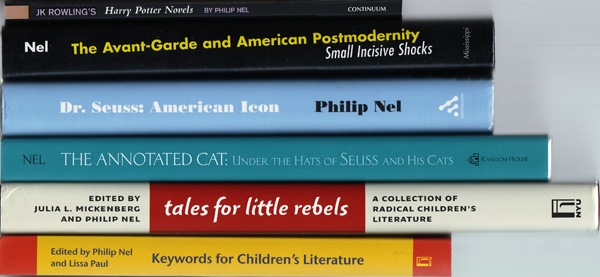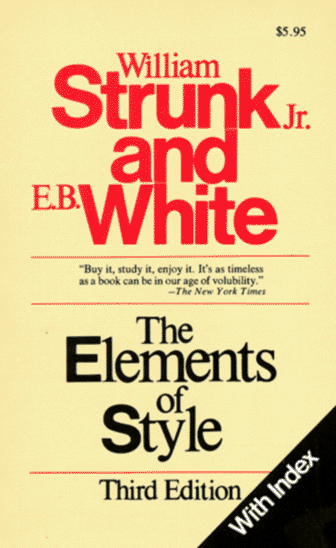Since I’m an English professor and this advice derives from my experience, the following will be more pertinent to writers of non-fiction than it will to writers of fiction. For good advice on fiction (and on writing in general), please read Elmore Leonard’s “Ten Rules for Writing Fiction.”
1. There is no one foolproof way to write a book. The main thing you need to do is write.
2. Write the book you’d like to read.
3. If this is a scholarly book, figure out what questions you want to answer, and then draw upon whichever critical methodologies will help you answer them. To put this another way, I align myself with no one critical approach: the questions I’m asking determine the approach I use. For a pair of essays on Don DeLillo and gender, I took a feminist approach, but for “Don DeLillo’s Return to Form: The Modernist Poetics of The Body Artist” (Contemporary Literature, 2001) I was an old-school formalist – heavily influenced by Arthur Saltzman’s This Mad Instead: Governing Metaphors in Contemporary American Fiction. For “Horton Hears a Heil!” (the second chapter of Dr. Seuss: American Icon), I was very historicist, but for that book’s fifth chapter, I was more eclectic, more cultural studies. Experiment until you find what method works, and then be practical – deploy approaches best-suited to your questions.

4. Write regularly. Sometimes you write 50 pages to get 10 good ones, but other times you write 10 pages to get 10 good ones. Once you have text, you can revise, reshape, edit, and so on. But you need the text first.
5. When I’m writing a book, I often think in terms of writing chapters. When I’m writing a chapter, I often think in terms of writing individual paragraphs. When I’m writing paragraphs, I just focus on the sentences. In other words: take this one step at a time. Sentences become paragraphs, paragraphs become chapters, chapters add up to form a book. You’ll get there. Just keep writing.
6. Write in whatever order makes sense to you. For academic books, I often write the sections out of order – I write the pieces of the larger work as they grab my attention. Later, I figure out their sequence in the book, and revise accordingly. This method works well because I tend to think of each chapter as a stand-alone essay that explores one facet of the larger question or questions. When writing a narrative, as I did for the biography of Crockett Johnson and Ruth Krauss (forthcoming June 2012), I worked mostly in chronological order. But only mostly. I had written versions of later pieces (such as 1950-1955) earlier in the process. I also wove in other information as I found it, and trimmed sections that went on for too long.
7. Write in whatever medium makes sense to you at that moment. I do most of my writing on a computer. However, when I’ve been stuck, I’ve also written longhand. And I’ve jotted down ideas and sentences on scraps of paper, post-it notes, concert programmes, even the iPhone’s “Notes” app.
8. Write whenever you can. If you can set aside a specific time each day, that’s ideal. Some people work best in the mornings, others in the evenings. If you can’t set a precise daily routine, then just grab pieces of time where you find them – an hour here, 15 minutes there, and so on. (Since I can’t set a daily routine, this is what I do.) The main thing is to write regularly – preferably every day.
9. Read good writers, and then aspire to write as well as they do. From reading other writers, I learn about style, narrative structure, sentence structure, ways of thinking, and … everything. Mike Davis‘s City of Quartz taught me how to structure The Avant-Garde and American Postmodernity. Aiming for accessible but smart literary criticism, I wrote Dr. Seuss: American Icon under the influence of The New Yorker – especially Anthony Lane and Adam Gopnik. Gil Rodman‘s Elvis After Elvis: The Posthumous Career of a Living Legend helped me figure out how to write Chapter 6 (on Seuss’s legacy) of that book. Many, many books have influenced the biography of Johnson and Krauss: Louis Menand‘s The Metaphysical Club helped me figure out how and why to launch a confident digression into contextual material, Carol Sklenicka‘s Raymond Carver: A Writer’s Life taught me how to create character, and many writers taught me the importance of ending a chapter on something suggestive. Most of these books have little or nothing to do with the subjects of my book. I saw them solving problems that I was having, and then borrowed or adapted their solutions for my work.
10. Save to help you delete. Worried about “killing your darlings”? Don’t fret. Just save the current manuscript with yesterday’s date, and then close that document. Open up the manuscript again, give it a new file name, and – knowing that you have a copy of all of those “darlings” – be ruthless. Cut, reword, restructure. It’s much easier to do what needs to be done if you already have a backup copy. I do this often, and rarely do I re-open the older versions. But knowing that they’re there helps me move forward.
 11. The two most important things I learned from Strunk and White’s Elements of Style (Third Ed., 1979) are: 1. “Omit needless words.” 2. “Write with nouns and verbs.” When I’m writing or editing, I apply these rules all the time.
11. The two most important things I learned from Strunk and White’s Elements of Style (Third Ed., 1979) are: 1. “Omit needless words.” 2. “Write with nouns and verbs.” When I’m writing or editing, I apply these rules all the time.
Explaining the first point, Strunk and White state, “Vigorous writing is concise. A sentence should contain no unnecessary words, a paragraph no unnecessary sentences, for the same reason that a drawing should have no unnecessary lines and a machine no unnecessary parts. This requires not that the writer make all his sentences short or that he avoid all detail and treat his subjects only in outline, but that every word tell” (23). (Neither Strunk nor White believed in gender-inclusive pronouns: so, please edit the preceding pronouns according to your taste.) Elaborating on the second point, they tell us: “Write with nouns and verbs, not with adjectives and adverbs. The adjective hasn’t been built that can pull a weak or inaccurate noun out of a tight place” (71). Though careful “not to disparage adjectives and adverbs,” they argue that, in general, “it is nouns and verbs, not their assistants, that give to good writing its toughness and color” (72).
12. “Writer’s block” is a myth. If one part of your book is giving you trouble, then write another part. Or get up, take a walk, and come back to the troubling bit. Or write about the trouble you’re having. Or write through the trouble. But keep going.
13. To those who say “I don’t know that I have the time or energy to write a book,” I’d respond: “If you really believe that, then you don’t and you won’t. But if writing this book is important to you, you’ll find the time and summon the energy.” Of course, if writing the book isn’t that important to you, that’s OK, too. Writing a book is a lot of work, and there may well be more pleasant ways for you to spend your time.
14. Finally, if any of the preceding methods do not work for you, then ignore them. Write in whatever way or ways you find most effective. Realize that what works may vary from project to project, and even from day to day. As I said at the outset, there is no one foolproof way to write a book. Mostly, what you have to do is… keep writing.
Related posts from Nine Kinds of Pie:
- How to Publish Your Book; or, the Little Manuscript That Could (Aug. 2010)
- How to Publish Your Article (Jan. 2011)
Recently finished a dissertation and want to transform it into a book? Begin by reading this excerpt from William Germano’s From Dissertation to Book (Princeton UP, 2005). Then, read the rest of the book.

Matthew Raese
craig yoe
Philip Nel